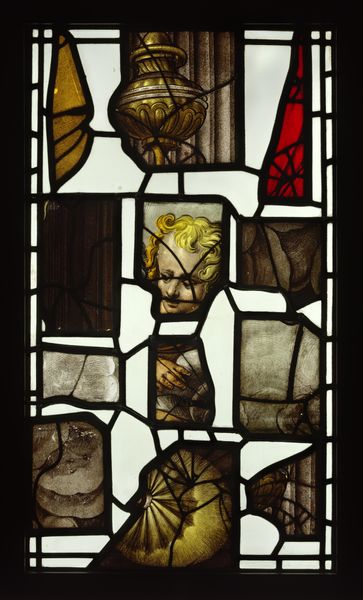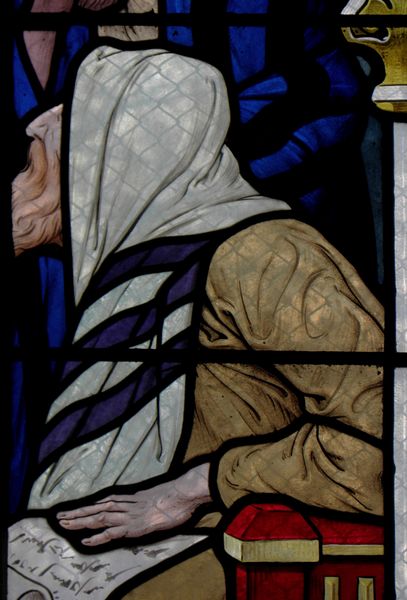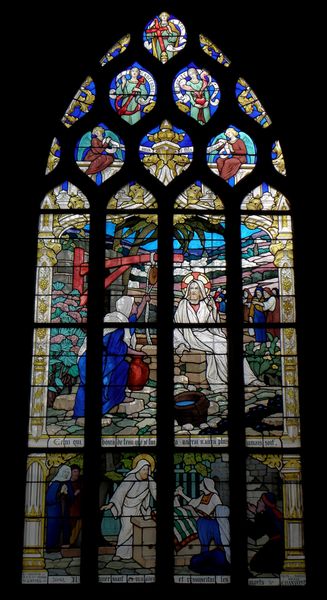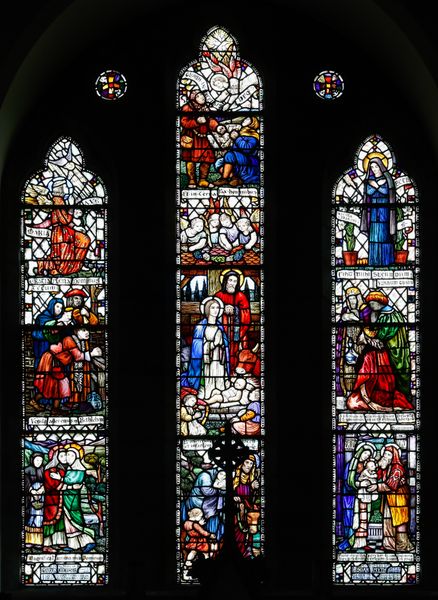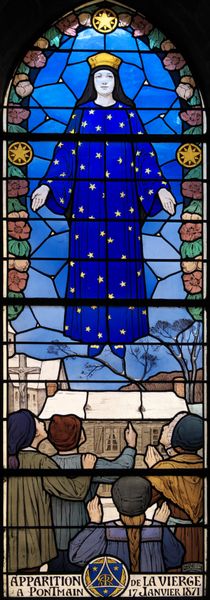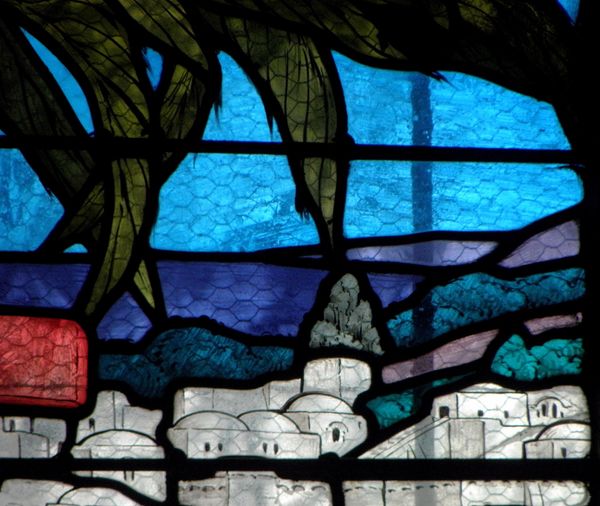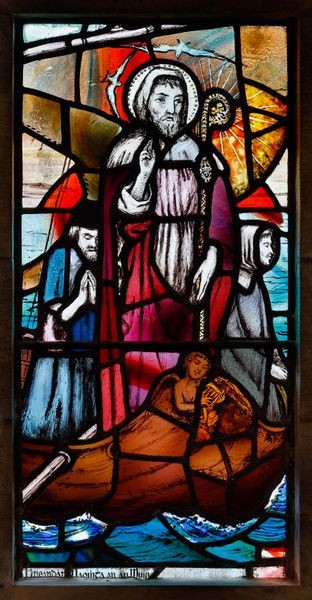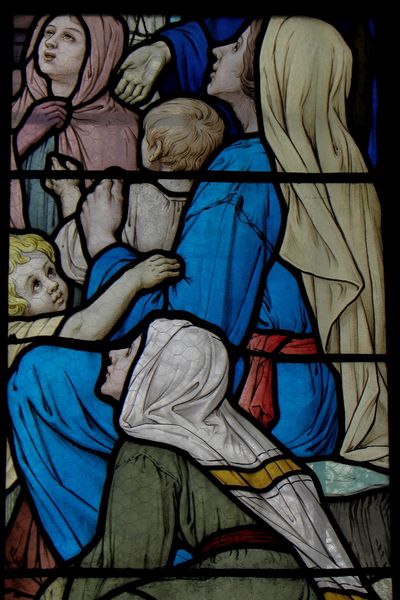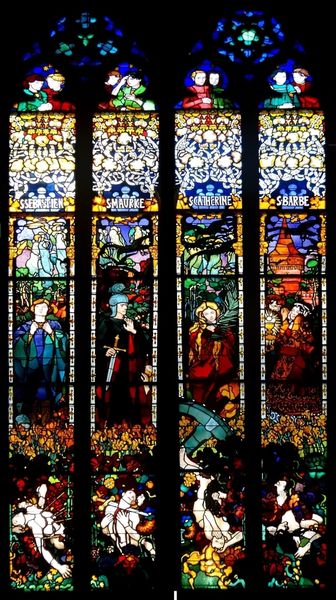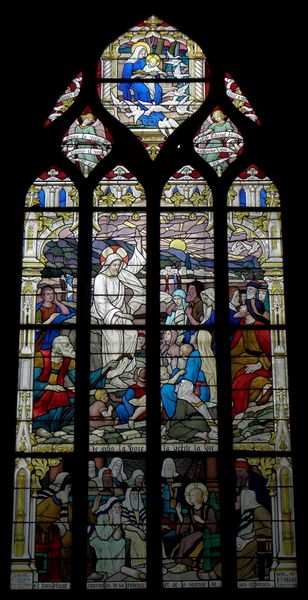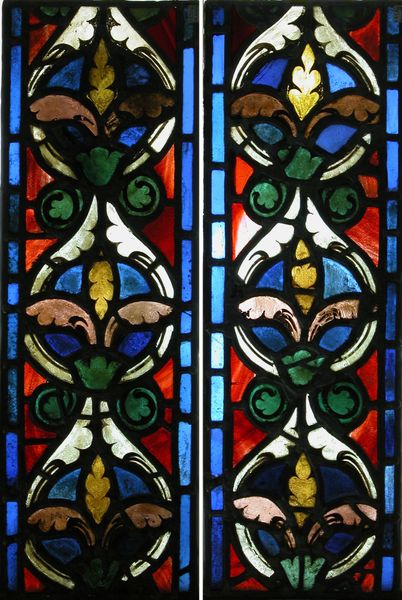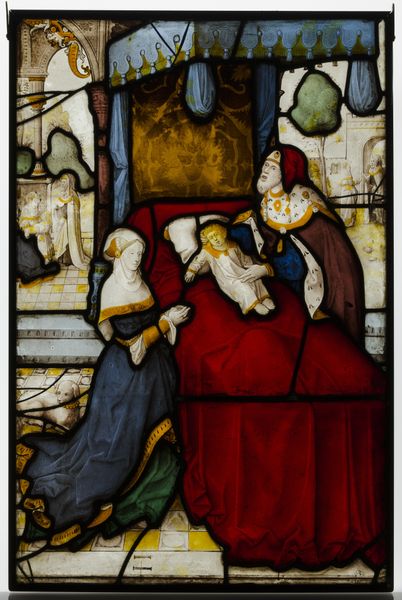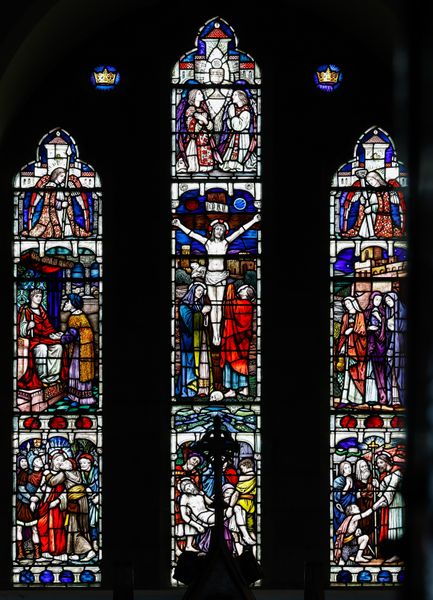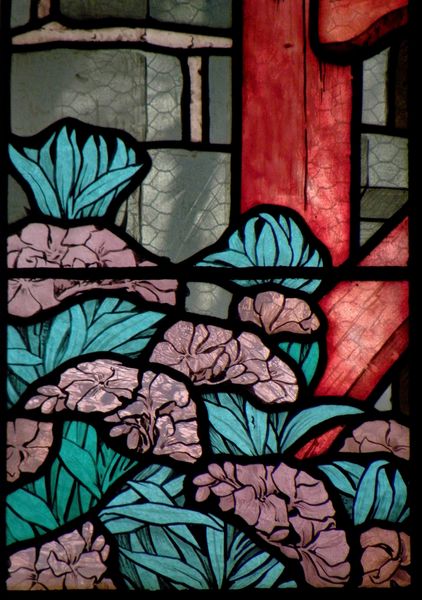
Ruit met 16e en 17e-eeuwse glasscherven afkomstig uit het raam van het Sterfbed van Maria in de Oude Kerk te Amsterdam Possibly 1555 - 1906
0:00
0:00
dirckpieterszcrabeth
Rijksmuseum
drawing, glass
#
drawing
#
medieval
#
narrative-art
#
figuration
#
glass
Dimensions: height 108.5 cm, width 69 cm, depth 5 cm, height 96.5 cm, width 55 cm
Copyright: Rijks Museum: Open Domain
Editor: Here we have "Ruit met 16e en 17e-eeuwse glasscherven afkomstig uit het raam van het Sterfbed van Maria in de Oude Kerk te Amsterdam", made with glass and drawings sometime between 1555 and 1906 by Dirck Pietersz. Crabeth. The arrangement of shattered glass is striking, but it makes it hard to see any figurative subject matter. How do you interpret this work? Curator: This isn't just an arrangement of shattered glass; it’s a fragmented narrative reflecting historical trauma and resilience. The shards are remnants of stained-glass windows, narrating the Death of the Virgin from Amsterdam’s Oude Kerk. Given its history, shouldn’t we ask how this artwork embodies themes of cultural destruction and reconstruction? How might the intentional reconstruction, centuries after its initial creation, relate to shifting societal views on religion, art, and history? Editor: So the fragmentation becomes part of the narrative? It's like the broken pieces tell their own story of loss and survival. Curator: Precisely. And who decides what fragments are worthy of preservation? What about those shards deemed less important or representative? Whose stories do they hold, and why are they excluded from the reconstructed narrative? Understanding those power dynamics are crucial. Editor: That makes me think about the ongoing debates surrounding the preservation of cultural heritage. What gets saved, and why? Curator: Exactly! Consider also how this work speaks to ideas of authenticity and authorship. If it incorporates glass from different periods, does that change how we view the original artist’s intention, and should those later alterations by regarded as later artistic statements. Editor: I see how analyzing this artwork touches upon significant contemporary issues – cultural heritage, social justice, and the politics of art. Curator: Right! It is also a commentary on cultural memory, revealing layers of meaning beneath the surface. Art becomes a tool to confront our collective past, prompting us to critically examine our present values.
Comments
No comments
Be the first to comment and join the conversation on the ultimate creative platform.
